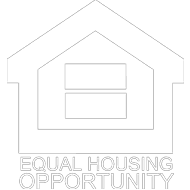If you’ve been following the housing market, you’ve likely noticed one topic dominating conversations: rising interest rates. For many buyers, this shift sparks concern that homeownership may no longer be affordable. But while financing a home today looks different than it did just a few years ago, understanding how interest rates affect your monthly payment—and knowing what options still exist to lower it—can put control back in your hands.
In this article, we’ll break down how mortgage rates influence long-term affordability, show real-world examples, and outline practical ways to manage costs—even in a higher-rate market.
How Interest Rates Affect Your Monthly Payment
When you take out a mortgage, your monthly payment depends on three main factors: loan amount, interest rate, and loan term. While home prices influence the total borrowed amount, the interest rate determines how much you’ll ultimately pay for that loan over time.
Let’s look at a comparison using recent national averages:
-
Loan Amount: $400,000
-
30-Year Fixed Mortgage at 3% (2021): About $1,686/month
-
30-Year Fixed Mortgage at 6.9% (2025): About $2,638/month
That’s nearly a $950 increase per month, purely from the higher rate. This explains why rising interest rates can significantly change affordability—even when home prices remain steady.
The good news? There are still proven ways to reduce that monthly cost.
Smart Strategies to Lower Your Payment
Even in a higher-rate environment, informed buyers have tools and programs that can make homeownership more manageable.
1. Buy Down the Rate
Many lenders allow borrowers to purchase discount points—an upfront payment that lowers the loan’s interest rate. In some cases, sellers may even agree to pay these points as part of negotiations. A 1% reduction in your rate can mean hundreds of dollars saved each month.
2. Try a Temporary 2-1 Buydown
This option lowers your rate by 2% in the first year and 1% in the second before it reverts to the original rate. It’s a great short-term relief strategy for buyers who expect rates—or their income—to improve in the near future.
3. Improve Your Credit Score
A higher credit score can unlock better rates. Raising your score from 700 to 760+ could earn you a 0.5% rate improvement, which adds up to tens of thousands in savings over the life of your mortgage. Pay down revolving debt and review your credit report for errors before applying.
4. Explore Loan Programs Beyond Conventional Options
FHA, VA, and USDA loans can offer lower-than-market interest rates or smaller down payments. Even if you qualify for a conventional loan, comparing multiple programs with a trusted lender can reveal opportunities for long-term savings.
Local Insights: Staten Island, New York
Homebuyers in Staten Island are feeling the effects of both higher mortgage rates and rising property taxes. The borough’s median home price remains relatively high compared to other New York City areas, but demand for single-family homes has stayed strong.
Buyers can often find savings by:
-
Working with local lenders familiar with NYC property requirements.
-
Exploring first-time homebuyer programs offered through the New York State of Homes and Community Renewal (HCR), which sometimes provide down payment or rate assistance.
-
Considering homes in neighborhoods like Port Richmond or Saint George, where average prices remain below Staten Island’s median, helping offset rate increases.
While interest rates can influence monthly costs, local incentives and property selection play a major role in overall affordability.
Local Insights: Middlesex County, New Jersey
In Middlesex County, homebuyers benefit from a slightly lower average property tax rate compared to parts of North Jersey, though prices have remained steady due to strong demand near commuter hubs like Edison, Woodbridge, and East Brunswick.
Buyers here can reduce payment strain by:
-
Looking into NJ Housing and Mortgage Finance Agency (NJHMFA) programs that offer competitive fixed-rate mortgages and down payment assistance.
-
Partnering with lenders experienced in local market trends who can structure options like 2-1 buydowns or adjustable-rate mortgages.
-
Considering smaller suburban homes or townhouses to balance loan size with today’s higher rates.
Even in a higher-rate market, Middlesex County remains an attractive choice for buyers seeking strong value and access to major employers and transit routes.
Will Rates Go Back Down?
According to most economic forecasts, mortgage rates may gradually ease through 2025, potentially returning closer to the mid-6% range. However, it’s unlikely we’ll see the record lows of 2020 and 2021 anytime soon.
That’s why many experts remind buyers to “marry the house, date the rate.” If you find a home that fits your needs and budget, you can always refinance when conditions improve—but waiting might mean higher prices or missed opportunities.
Stay Informed, Not Intimidated
Yes, rising interest rates have changed how buyers approach the market—but they haven’t erased opportunity. With the right preparation, loan strategy, and guidance from a trusted lender, it’s still possible to secure a manageable payment and start building long-term equity.
Instead of waiting for the perfect rate, focus on the right plan for your situation. After all, rates may rise and fall, but the value of owning a home—and the stability it brings—remains steady.






